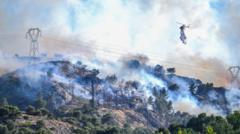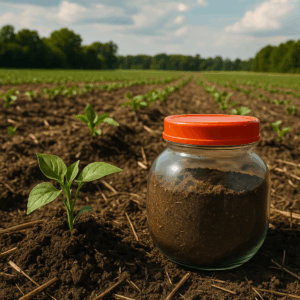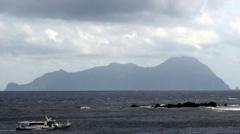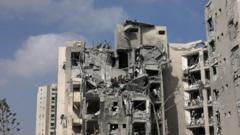Local authorities are investigating the cause, with residents claiming industrial waste may be to blame.
Bright Red Canal in Buenos Aires Raises Environmental Concerns
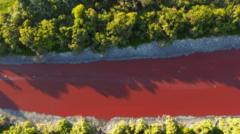
Bright Red Canal in Buenos Aires Raises Environmental Concerns
A sudden color change in a canal near Buenos Aires has residents worried about pollution.
A canal located on the outskirts of Buenos Aires, Argentina, has turned a striking bright red, sparking concern among residents and prompting an investigation by local authorities. The Sarandí canal, which leads into the eco-sensitive area of the Rio de la Plata, displayed an alarming hue on Thursday, with social media filled with images and videos showcasing the unusual phenomenon.
Initial reports suggest that the dramatic color change might be tied to the illegal dumping of textile dyes or hazardous chemical waste from nearby factories. In response to the incident, Argentina’s Environment Ministry announced that they have collected water samples from the canal to analyze the underlying causes of this disturbing development.
As the day progressed, the bright red color of the water reportedly began to fade. Local residents have expressed their distress over what they believe to be chronic pollution issues. Silvia, a nearby resident, recounted her experiences with different water colors over time, noting, "Today, it has no smell. There are not many factories in the area, although there are warehouses." Maria Ducomls, another resident, emphasized the issue by stating that they had witnessed various colors of the canal's water in the past, including shades of blue, green, and lilac, often accompanied by an oily surface.
The Sarandí canal traverses an industrial region dominated by leather processing and textile manufacturing, raising questions about environmental oversight and the potential health risks posed to local communities. The incident highlights a pressing need for stricter regulation regarding industrial waste disposal practices to safeguard both the ecosystem and public health in Buenos Aires.
Initial reports suggest that the dramatic color change might be tied to the illegal dumping of textile dyes or hazardous chemical waste from nearby factories. In response to the incident, Argentina’s Environment Ministry announced that they have collected water samples from the canal to analyze the underlying causes of this disturbing development.
As the day progressed, the bright red color of the water reportedly began to fade. Local residents have expressed their distress over what they believe to be chronic pollution issues. Silvia, a nearby resident, recounted her experiences with different water colors over time, noting, "Today, it has no smell. There are not many factories in the area, although there are warehouses." Maria Ducomls, another resident, emphasized the issue by stating that they had witnessed various colors of the canal's water in the past, including shades of blue, green, and lilac, often accompanied by an oily surface.
The Sarandí canal traverses an industrial region dominated by leather processing and textile manufacturing, raising questions about environmental oversight and the potential health risks posed to local communities. The incident highlights a pressing need for stricter regulation regarding industrial waste disposal practices to safeguard both the ecosystem and public health in Buenos Aires.




